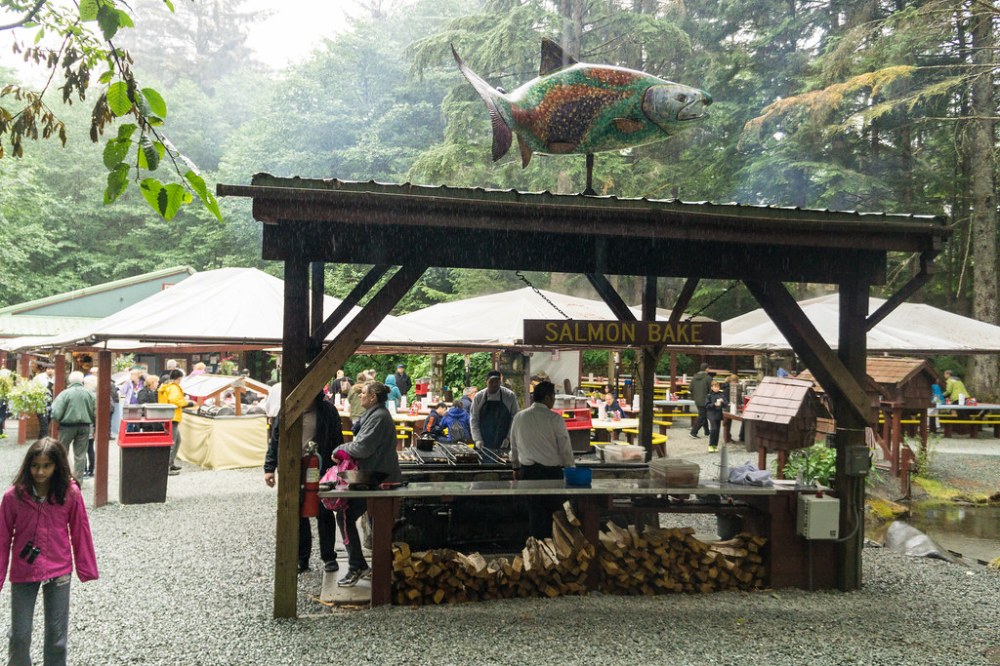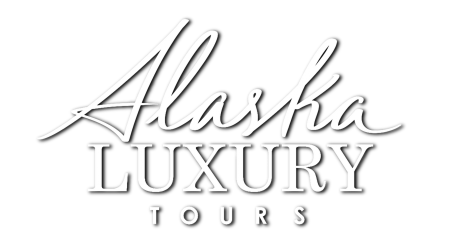Why Are There Salmon in the Trees?

Throughout Alaska, salmon are essential to both wildlife and people. Interwoven into cultures, economies, and ecosystems, they’re also critical to forests like the 16.7 million-acre Tongass National Forest in Juneau. The country’s largest and most unique, it’s made up of yellow and western red cedar, western hemlock, and Sitka spruce as part of the largest remaining intact temperate rainforest on the planet.
Every year, wild salmon runs return from the North Pacific to Tongass streams to spawn and die. If you visit Eagle Beach, about a 30-minute drive from downtown around mile marker 27, you can see them coming up the river between late June and early August. During this process, the abundant fish bring rich nutrients from the ocean to the land.
When the salmon return to spawn, they’re a powerhouse of nutrients, containing a rich amount of energy in the form of fat and protein, along with significant amounts of phosphorus and nitrogen. Around 70% of the nitrogen found in foliage near salmon streams comes from salmon, helping to sustain the ecosystem while making the Tongass a “salmon forest.”
Scientists have measured nitrogen levels from the trees’ yearly growth rings and found a correlation between how many salmon returned to spawn the previous year. They use these rings to help reconstruct the historic returns of the fish with the thought that ancient trees may reveal secrets that can help manage fisheries in the future.
Salmon links the land to the sea. They can’t survive if both aren’t healthy. When there is a lack of salmon it has a major impact on coastal forests. Research has shown that trees grow half as fast in areas with no salmon as compared to those that are salmon-rich. A dramatic decrease in their populations also threatens the web of life that depends on the annual arrival of the salmon from the ocean.
It’s no wonder the long arms of the Tongass trees spread across streams as if to welcome the salmon back! For the salmon, this may be their final act, but they will continue to contribute to the cycle of life.
Supporting Juneau’s Abundant Wildlife
When the salmon return to the streams of their birth, they return to hungry bears, bald eagles, ravens, and more. If you visit Juneau around spawning time you’re likely to see many animals fishing. Some bears consume their fish at streamside while many others head into the forest to eat their catch. They consume the skin, brain, belly, and oil roe, but the rest is left untouched, leaving salmon “presents” in the woods. The half-eaten carcasses are consumed and transported further by the bald eagles, other birds, and small carnivores of all types. Sometimes, you can even see leftover salmon bits hanging in the trees.

Female bears nurse their cubs with nutrient-enriched milk while the eagles soar even farther thanks to the salmon. The nutrients are also absorbed through the roots of plants, ending up in the trees. The forest, in turn, supports the fish, shading the trees with their limbs to keep developing eggs cool in the spawning streams. When they die, falling into the water, the decay feeds the insects that young salmon feed on.
There is no part of a tree that doesn’t play an important role in enriching a stream, everything from the needles to the powerful roots are utilized. Even the leaves contribute to shelter and food for aquatic insects that feed the following year’s salmon. The roots keep the banks of streams stabilized, slowing erosion and protecting the water to ensure it stays pristine, something that’s necessary for the salmon’s survival.
With an abundance of salmon, the Tongass is able to host North America’s highest density of brown bears, along with wolves, Sitka black-tailed deer, sea otters, seals, humpback whales, porpoises, countless bald eagles, sandhill cranes, and even hummingbirds.
The Importance of Salmon for Alaskans
Salmon are part of daily life in Juneau and throughout Alaska as they have been for decades. In the early 1800s, Naval officers on voyages fished for relaxation. During the gold rush, the prospector’s kit almost always included a rod and reel.

Today, you might spot a salmon tugging on the end of an angler’s line, or even your own. Anglers come from far and wide to pursue them. A major part of the economy, salmon provides jobs for commercial fishermen, deckhands, processing workers, and more. Sport fishing is a significant economic driver, with salmon filling the freezers and family smokers. Visitors can also watch the salmon life cycle at the Macaulay Salmon Hatchery, with five to 10 million fish returning every year to spawn.
You’ll see the salmon on t-shirts, jewelry, paintings, and sculptures. They’re heralded in all sorts of celebrations and festivals, songs and dances.

When you’re in Juneau, don’t forget to look up to see the salmon in the trees. And, when encountering a huge Sitka spruce while hiking along a stream, you might want to thank it for your mouthwatering salmon dinner.
Of course, if you want to try catching your own salmon dinner, Alaska Luxury Tours offers Super Yacht service and fishing charters throughout the summer season on the “Luff Boat.” Trips can even include a private chef to cook it up.
